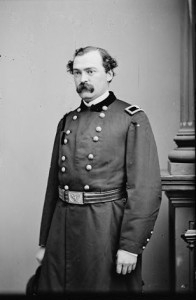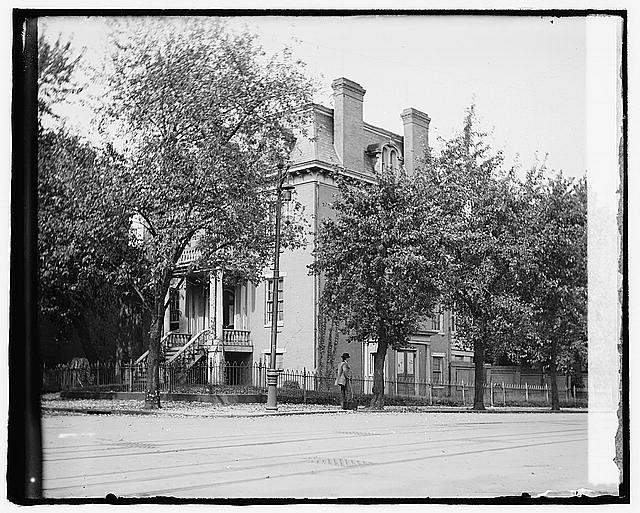It’s been almost four month since we’ve heard from the 19th NY Volunteer Infantry from the Auburn, New York area. A few things have been happening, but no fighting to speak of. Since the end of September they had been stationed at Muddy Branch, a tributary of the Potomac in Maryland. The regiment’s main job was to guard the supply train that brought the goods from Washington to General Nathaniel Banks’ army.
Throughout October and November the 19th suffered mass desertions such that “by December 1, 1861 the regiment mustered only 542 men, with only 425 present fit for duty.”[1] James H. Ledlie was promoted to colonel on November 18th. In early December “Seward’s Regiment” moved from Muddy Branch to winter quarters near Frederick, Maryland. But probably the biggest news was succinctly reported earlier this week (150 years ago).
From The New-York Times December 13, 1861:
THE NINETEENTH NEW-YORK AN ARTILLERY REGIMENT.
The Nineteenth New-York Regiment, Col. LEDLIE, was to-day, by order of the War Department, changed from infantry to an artillery regiment, to comprise twelve batteries, a portion of which consists of heavy guns.
Politics apparently made this conversion possible. The following is from Cayuga in the Field, published in 1873. (Henry Hall must have gotten this account from one of the participants, presumably James Ledlie):
More ambitious plans now began to be rife in the regiment. A proposition made for conversion into artillery met with universal favor. Col. Ledlie, who was very popular in the army, and had great influence at Washington, undertook the delicate responsibility of seeing what could be done at the Capital about it.
Repairing to Washington, he met Gen. McClellan and Gov. Morgan, one day at dinner, at Mr. Seward’s. The conversation turned upon the needs of the army, and the heavy fortifications then being built for the defense of Washington. A necessity for additional engineers to build and artillerists to man these forts had then recently been made manifest to Gen. McClellan by Gen. Barry, of the Engineers. Advantage of the fact was taken by Ledlie, who with infinite tact brought forward the claims to notice of his regiment. Gen. McClellan said :
“Colonel, how would you like to have your regiment converted
to engineers?”
He replied, “If you want to do anything for me, General, I
can tell you something I would like better than that?”
“What is that ?”
“Give me authority to raise an artillery regiment.”
Gov. Morgan heartily seconded the proposition, promising to do everything in his power to aid in raising the regiment, and Sec’y Seward presented a number of forcible suggestions on the subject The subject was dismissed with an invitation to Ledlie to call and see McClellan next day.
At the appointed hour Secretary Seward accompanied him to the headquarters of the General. After a brief interview, it was arranged that an artillery regiment should be raised in New York State, 1,900 strong, with the 19th Volunteers as a nucleus, and the Adjutant-General was given instructions to make out the necessary papers. Col. Ledlie communicated the pleasing news to his officers, and on December 4th went North to raise his command.
James Ledlie was charged with dereliction of duty during the Battle of the Crater. You can read the details at the Wikipedia link above.
- [1]Henry Hall and James Hall, Cayuga in the Field, 1873, Auburn, N.Y. p.80↩


